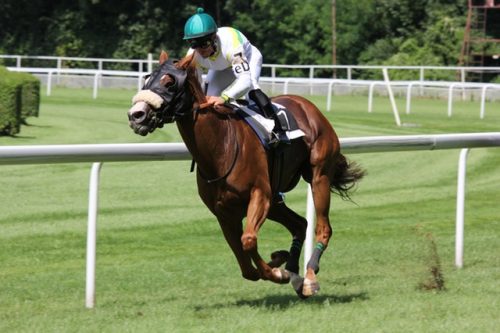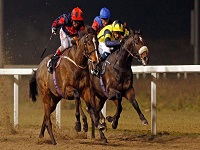When it comes to sports betting, from football to the horses and from tennis to golf, there really is no sure way to win. That is because sport is so unpredictable that even the hottest of favourites can go cold on the big day and also partly because, as the old saying goes, ‘every (under)dog has its day.’
Without a crystal ball to gaze into, we must as smart punters do our homework to ensure that our bets have the best possible chance of winning. That is the key to finding football winners and it is certainly essential in accurately doing your own handicapping of the horses.
The great thing about horse racing is that there is a fantastic amount of statistical information available out there on pretty much every horse that’s ever taken to the track, which ensures that making informed wagering decisions is as easy as it possible could be. As mentioned, there is no such thing as a ‘sure bet’ but you can significantly improve your chances of winning by taking all of the data available and critiquing each runner’s chances.
There are a number of factors you should consider when handicapping, but really there are four key areas for consideration: form, class, speed and going.
#1: Trust the Form Book
This is the best guide of a horse’s chances, although there is more to good form than meets the eye. Yes, it’s great that they have won on their last three outings, but how good was the opposition? What was the going and the distance? How many other runners were there?
These are all valid questions, and help to identify just how relevant form is. So let’s say we have what appears to be a nice 5/1 shot, and we take a look at their form which reads: 4-2-3-1-2-1. Now, that is impressive, and shows a very handy upward curve. But what if you found out that one of those wins came in a race with only three runners? What if your research found that the horse has never finished inside the top three on soft ground, which the upcoming race will be run on? What if their best form comes over 6f and this race is over one mile? Suddenly, that good form doesn’t appear so relevant.
And that is the key when studying form: relevance. An untested horse is rarely of interest, so consider whether your selection is taking a step up or step down in class, and whether the surface is appropriate for them to replicate their best form. If not, then you can expect that hot streak to come to an end rather sharpish.
#2: A Class Above
As you may or may not be aware, each UK and Irish horse race is given its own classification to ensure that trainers and owners can place their charges in the right renewals. This also acts as a good guide for punters, too.
So if a horse has shown form in Group 1 events drops down to Group 2, then clearly their form at a higher level will be of interest. By contrast, a horse moving up in class may find the extra quality in the field a little too much to deal with, so really it is class movements that help to identify betting value.
#3 – Need for Speed
For three mile slogs, top speed is rarely as important as stamina in determining the eventual winner. But for shorter races then clearly the faster the horse can run the better.
These speeds are published in traditional media such as The Racing Post, so these should act as a great starting point when undertaking your own handicapping.
But it is not just pure speed that you are looking out for: remember to consider whether a horse appears to be increasing or decreasing in average speed, as this can help to identify horses coming into form. Also, don’t forget to check the going as this will determine how fast a horse is running in real terms, e.g. high top speeds on good ground may not be proportionately accurate for races ran on softer surfaces.
#4 – When the Going Gets Tough
For non-horse racing enthusiasts it might seem like a trifling matter, but the footing and ‘give’ in a surface can play a huge part in whether a particular horse wins or not.
Heavy or soft ground will typically slow the pace of a race, and those with greater leg strength and stamina will prevail. On good going the fleet of foot should ultimately win out. Of course, it really isn’t as straight cut as that, but that is the prevailing logic.
The race listings will inform you of the going, and it is always keeping an eye on the weather prior to the meeting; a few heavy downpours will naturally soften the surface. Listening/reading pre-meeting interviews will also help to add insight to your handicapping.
But there’s more….
So there are the four standout boxes to be ticked by handicappers, and alas there are other items for consideration; which shows why it is so hard to become a successful horse racing punter (but not impossible, as the thousands of professional horse racing bettors around the globe show).
Again, these aren’t exact sciences to any degree, but that said are essential considerations when filling up your betslip.
The first is period of rest/activity level. Some horses are ‘overrun’ by their owners, and these simply cannot replicate their best form race after race. Typically, inconsistent results follow, so make sure you check a horse’s last six starts to determine whether they are due a rest or not – 12 races in 24 months, or four in the past nine/ten months or so – are considered the optimum.
Linked to this is the amount of time off a horse has enjoyed between outings. Usually anything between 30-60 days is considered premium rest; anything shorter than this may result in fatigue and a longer period – maybe due to injury – would dictate that a few races may be required to run off any rust.
Finally, consider the form of the trainer and jockey, and how successful their partnership has been recently. Some jockeys just mesh well with certain horses, and that is reflected in the quality of their performances. Particular jockeys will hook up with the same trainers and yards on a consistent basis, so check to see if their prior link-ups have yielded positive results.















